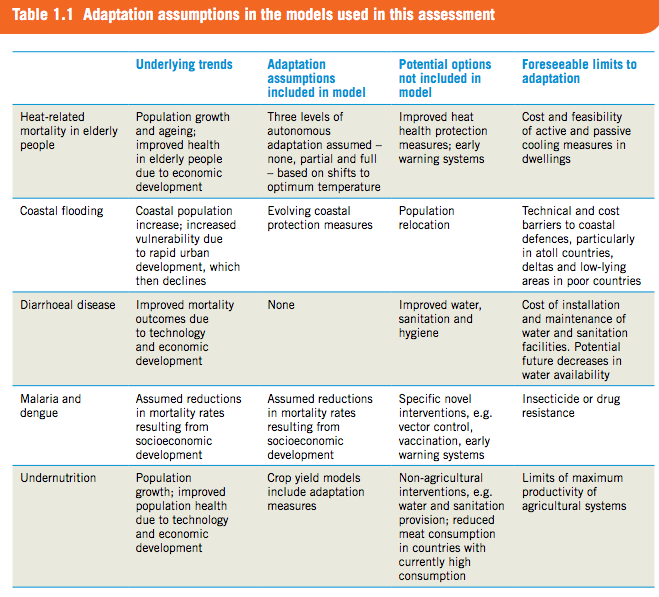Earlier this year, the UN’s World Health Organisation released a report suggesting climate change could cause an extra 250,000 deaths annually between 2030 and 2050. Today, The Times UK claims the figure is ‘exaggerated’.
The Times’s headline is based on comments by an analyst for the climate skeptic thinktank the Global Warming Policy Foundation (GWPF).
The GWPF tells the paper that the WHO’s estimates were “based on false assumptions” which led to the supposedly inflated headline figure. But the GWPF’s critique has a number of flaws.
Despite the GWPF’s claims, the WHO’s report takes care to outline its assumptions in detail, and explicitly states that projections about climate change-related deaths remain uncertain.
Climate change-related deaths
The WHO models how rising temperatures, emissions and sea levels impact nutrition, malaria, dengue fever, diarrhoeal disease, and heat-related deaths.
Alongside the report, the WHO has produced a factsheet, summarising its key findings. The WHO’s modelling suggests there could be “approximately 250,000 additional deaths due to climate change per year between 2030 and 2050.”
Assumptions
To calculate that figure, the WHO includes certain assumptions about how the world would change between now and 2050, from population growth to economic and technological development. It’s with these assumptions that the GWPF and Times take umbrage.
The Times says “the assumptions used by WHO are not mentioned in its fact sheet but instead relegated to the third column of a table in the full report”.
The assumptions behind the figures are outlined in Table 1.1 on page 6 of the report’s executive summary:
 Table Source: World Health Organisation
Table Source: World Health Organisation
The GWPF’s main problem with the WHO’s modelling is that it “ignores the fact that people and societies are not potted plants: that they will actually take steps to reduce, if not nullify, real or perceived threats to their life, limb and wellbeing.”
But that’s not the case. Despite the GWPF’s accusation, the WHO’s model does include some assumptions about how people may adapt to climate change, outlined in the second column of the table above. For example, it assumes coastal protection improves, that economic development leads to reduced mortality rates, and that farmers make efforts to protect their crops.
The WHO acknowledges that its modelling doesn’t include some potential ways people may adapt because “the quantification of the burden avoided by adaptation is difficult to assess.” It outlines what it leaves out of its model in the third column of the table above.
For instance, the WHO doesn’t include the impact of new early warning systems for malaria, dengue, and heat-related deaths that may be implemented as many of these are still being developed. It also doesn’t include the impact of any new vaccines that may be developed and delivered, or make any predictions about whether people will move to avoid coastal flooding, as these are hard to predict.
That means the WHO’s estimate doesn’t “represent a prediction of the overall impacts of climate change on health, since [the model] could not quantify several important causal pathways”, as it acknowledges. Instead, the WHO says it puts an approximate number on the potentially big impact of climate change on human health, which “reinforces the need for strengthened public health measures” to be included in broader climate change policies.
Transparency
The GWPF’s analyst tells the Times the WHO’s assumptions “result in at least a 10-fold exaggeration in the number of extra deaths”.
But this figure doesn’t appear anywhere in the GWPF’s report critiquing the WHO’s work. Instead, the GWPF’s analysis simply concludes that “the methodologies and assumptions used by the WHO inevitably exaggerate the future mortality increases attributed to global warming, perhaps several fold.”
So, unlike the WHO’s work, which clearly outlines its assumptions and limitations, the GWPF’s estimate is impossible to analyse.
Reference:
Article originally published by The Carbon Brief, written by Mat Hope on December 01st 2014.












Comments